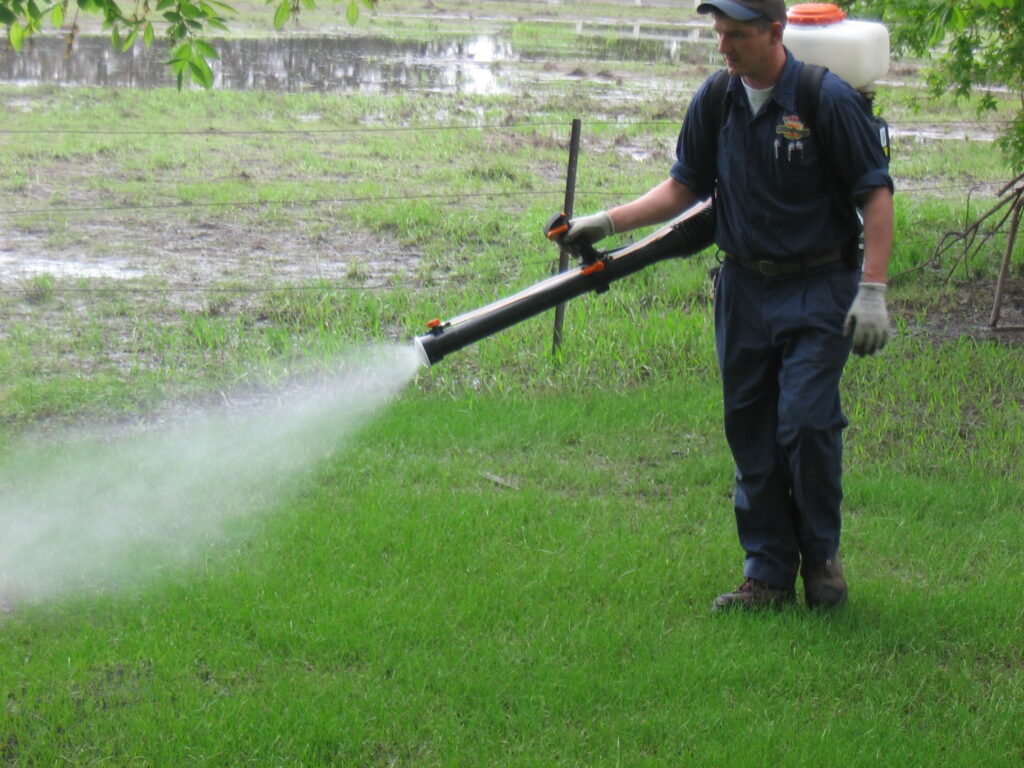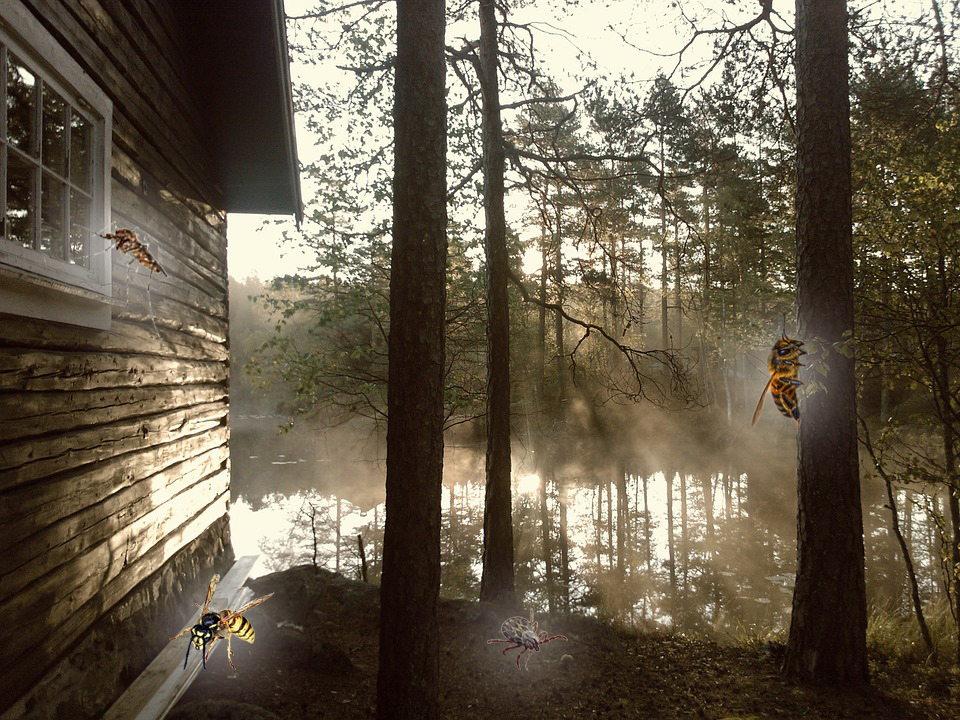
MOSQUITO DESCRIPTION
Adults are about 1/8-3/8” long, body and legs are usually covered with scales. They are mostly gray to black in color; some marked with white, silver, green, or iridescent blue scales. The head is long with 15-segmented antennae that are feathery on the male, hairy on the female. They have two wings that are long and narrow with scales along the veins and wing margin. Larvae have a wider head and thorax than the abdomen, the thorax consisting of 3 fused segments and being the widest. Antennas have only one segment. Their mouthparts with labial brush usually consist of numerous fine hairs.
Habits
Mosquitoes have adapted to almost every kind of aquatic situation such as permanent ponds and marshes, temporary flood waters or woodland pools, drainage ditches, and water contained in tree holes, leaves of plants, or artificial containers. The exceptions are flowing streams and the open waters of large streams, rivers, lakes, seas, and oceans. The number of generations per year ranges from 1 in cold climates to many in warmer climates where they breed continuously. The larvae feed on small aquatic organisms and organic debris, the pupae do not feed, and the adult males feed on nectar. Adult females also feed on nectar but most females require a blood meal before they can lay fertile eggs.
Flight ranges vary with the species but the average range is around 5-10 miles, with record ranges between 18 miles coastal and 110 miles at sea. The time of day in which biting occurs varies but most bite from dusk to dawn.
Control Methods
Control begins with an accurate and thorough assessment of the problem. On the household level, relief can be achieved by preventing entry to structures through proper screening and sealing and applying residuals to resting surfaces. On the personal level, the use of repellents is quite effective as well as mosquito clothing. Larvicides can be used in areas of standing water such as ditches, birdbaths, ponds and marshes. These will kill the larvae before they hatch. Fogging or spraying will also provide you with a mosquito free zone for a period of time. Treat under shrubs, short cut grass and tall grass.

Maximizing Your Pest-Free Season: Early Mosquito Control Strategies and Understanding Larviciding
Mosquitoes are annoying pests that live and breed in almost any standing water situation. While they have predators such as fish, frogs, birds, and dragonflies, mosquitoes can still reproduce at an alarming rate: many can reach adulthood within 10 days of hatching, at which point female mosquitoes will begin to bite humans and animals and…

Two Common Diseases Spread by Mosquitoes
Buzzing mosquitoes are a nuisance during the summer months. However, they can also carry potentially dangerous and sometimes fatal diseases. Here are some of the most common mosquito-borne illnesses in Western Canada. West Nile Virus (WNV) arrived in Canada about 20 years ago and is still one of the most prevalent diseases spread by mosquitoes….

Mosquito Fogging vs Mosquito Spraying
The word fogging is an old term in the pest control industry. At one time, mosquito fogging consisted of smoke generating equipment. With new and improved methods, mosquito spraying is now utilized more efficiently with the use of a motorized backpack sprayer. The Poulin’s treatment for mosquitoes utilizes a permethrin active ingredient mixed with water….

What’s Bugging You? 4 Pests You’ll Find at The Lake & Cabin
Warm weather rolling in means summer vacation, time off work, laying in the sun at the beach and enjoying relaxing weekends at the lake. Unfortunately, it also means unwanted guests could be tagging along during your summer fun. Heat and humidity are two ideal conditions for some of our most annoying little neighbors to thrive….

